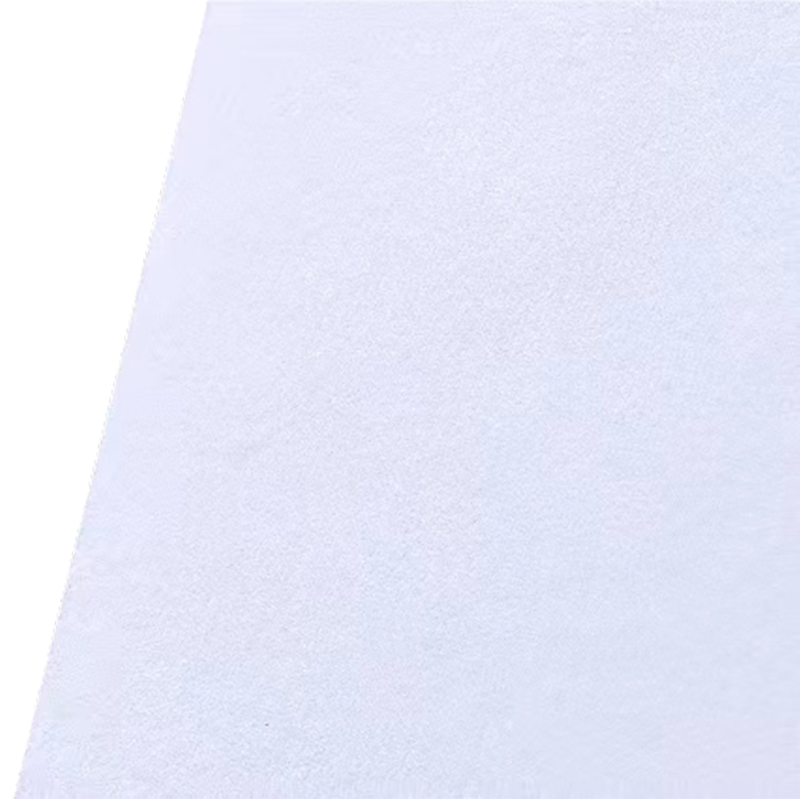If you need any help, please feel free to contact us
How Transfer Paper Quality Affects Final Textile Output
In the world of textile printing, the quality of transfer paper plays a critical role in determining the final appearance and durability of printed designs. Transfer paper serves as the medium through which images and patterns are transferred onto fabric, and its characteristics can greatly influence the sharpness, color vibrancy, and washability of the finished product. This article explores the importance of transfer paper quality, with particular attention to how it impacts textile printing results, and touches on related materials like double sided photo paper glossy, thermal paper 80mm x 80mm, and satin finish photo paper to provide a broader perspective on print media quality.

The Role of Transfer Paper in Textile Printing
Transfer paper, also known as heat transfer paper, is specially coated paper designed to carry ink or dye, which is then transferred to textile substrates through heat and pressure. The coating on the transfer paper must have specific properties to hold the ink firmly during the transfer process and release it cleanly onto the fabric. Poor quality transfer paper can advance to problems such as faded colors, blurred images, or incomplete transfers, which diminish the value of the printed textile product.
Key Qualities of Transfer Paper
Several factors define the quality of transfer paper. These include coating uniformity, heat resistance, ink absorption capacity, and release characteristics. Uniform coatings ensure consistent ink distribution and prevent smudging or color distortion during transfer. Heat resistance is essential because the paper must withstand high temperatures without degrading or curling excessively. Ink absorption affects the clarity and brightness of the image; if the paper absorbs too much ink, colors may appear dull, whereas too little absorption can cause ink smearing.
Double Sided Photo Paper Glossy and Textile Printing
While double sided photo paper is primarily used in photographic and graphic applications, understanding its qualities helps illuminate why specialized transfer paper is necessary for textiles. Double sided photo paper glossy features a smooth, reflective surface on both sides, enabling vibrant, detailed images with high color accuracy. However, this type of paper is not optimized for heat transfer onto textiles because its coating is designed for inkjet or laser printing rather than heat activation.
The glossiness and coating type that make double sided photo paper glossy, ideal for photo printing, can result in poor ink release and adhesion when applied to fabrics. The heat and pressure used in textile transfer may cause such photo papers to stick to the fabric unevenly or retain too much ink, pilot in uneven prints. Therefore, although the quality of double sided photo paper glossy is high for photographic purposes, transfer paper for textiles requires coatings that are compatible with heat and fabric properties.
Thermal Paper 80mm x 80mm and Its Distinction
Thermal paper 80mm x 80mm is a type of heat-sensitive paper commonly used in receipt printers and point-of-sale systems. While it shares the term "thermal" with heat transfer papers, its function and coating are quite different. Thermal paper’s coating darkens when exposed to heat, enabling printing without ink. However, it is not designed for ink transfer or textile printing.
This distinction is important because consumers might confuse various coated papers due to the terminology. In textile printing, transfer paper must not only tolerate heat but also release the dye or ink onto fabric efficiently. Unlike thermal paper 80mm x 80mm, which reacts to heat by changing color, heat transfer papers hold inks that transfer onto fabric under heat and pressure. Therefore, selecting the right paper type ensures the intended printing method aligns with the paper’s material properties.
Satin Finish Photo Paper and Visual Appeal
Satin finish photo paper offers a smooth, soft sheen that falls between glossy and matte finishes, providing subtle reflection without excessive glare. This finish is favored in photographic printing for its ability to render colors vividly while reducing fingerprint marks and reflections.
In textile printing, satin finish photo paper analogs are sometimes used for specific transfer techniques where a balance of color vibrancy and reduced shine is desired on the printed fabric. The paper’s surface texture affects ink absorption and the final look of transferred images. A satin finish coating on transfer paper can facilitate even ink distribution and reduce harsh reflections, resulting in a printed textile with a natural and elegant appearance.
Impact of Transfer Paper Quality on Textile Durability
Beyond visual quality, transfer paper affects the durability of prints on textiles. Good quality transfer papers help ensure that the ink adheres strongly to fabric fibers, resisting cracking, peeling, and fading during washing and wearing. In contrast, inferior transfer papers may cause inks to sit atop fabric fibers without proper bonding, resulting in prints that deteriorate quickly.
Moreover, the flexibility of transfer paper coatings influences the softness of the printed textile. Transfer papers that create thick, inflexible layers can make the fabric feel stiff and uncomfortable. High-quality transfer papers use coatings that form thin, flexible films, maintaining the fabric’s natural feel while delivering sharp images.
Choosing the appropriate transfer paper is vital for achieving desired results in textile printing. Factors such as coating uniformity, heat resistance, ink absorption, and release properties all contribute to the quality of the final textile output. While materials like double sided photo paper, glossy and satin finish photo paper serve important roles in photographic and graphic printing, they differ significantly from specialized heat transfer papers designed for textiles. Similarly, thermal paper 80mm x 80mm is unrelated to textile transfer due to its unique heat-sensitive properties.
Understanding these distinctions and focusing on transfer paper quality allows printers and manufacturers to produce textile prints with clear images, vibrant colors, and lasting durability. As textile printing technology continues to evolve, the choice of transfer paper remains a foundational factor in the quality and performance of printed fabrics.

 English
English Español
Español 中文简体
中文简体 Português
Português

